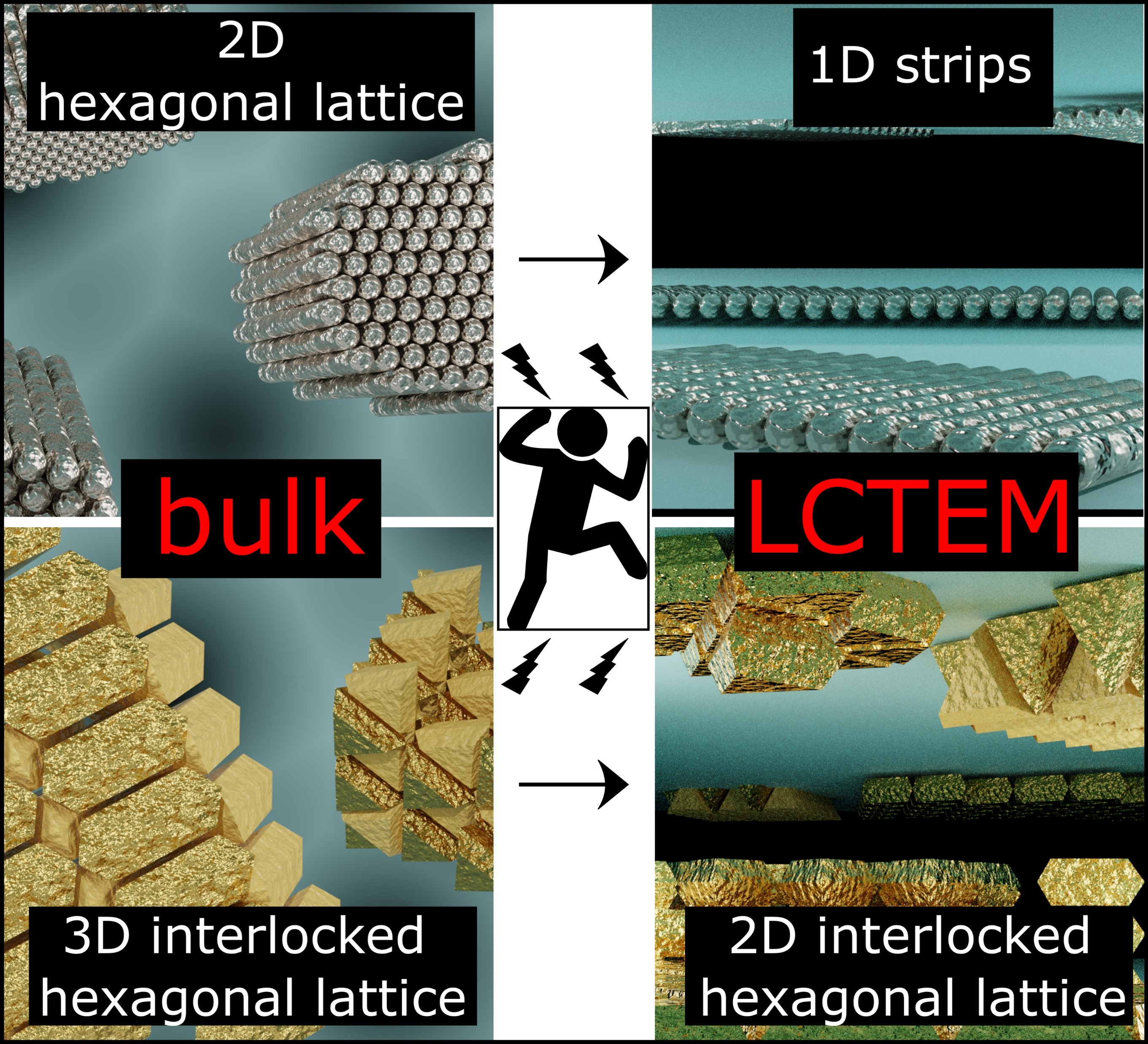Confinement Effects on the Structure of Entropy-InducedSupercrystals
 |
30/06/2023 Depletion-induced self-assembly is routinely used to separate plasmonicnanoparticles (NPs) of different shapes, but less often for its ability to createsupercrystals (SCs) in suspension. Therefore, these plasmonic assemblieshave not yet reached a high level of maturity and their in-depthcharacterization by a combination of in situ techniques is still very muchneeded. In this work, gold triangles (AuNTs) and silver nanorods (AgNRs) areassembled by depletion-induced self-assembly. Small Angle X-ray Scattering(SAXS) and scanning electron microscopy (SEM) analysis shows that theAuNTs and AgNRs form 3D and 2D hexagonal lattices in bulk, respectively.The colloidal crystals are also imaged by in situ Liquid-Cell TransmissionElectron Microscopy. Under confinement, the affinity of the NPs for the liquidcell windows reduces their ability to stack perpendicularly to the membraneand lead to SCs with a lower dimensionality than their bulk counterparts.Moreover, extended beam irradiation leads to disassembly of the lattices,which is well described by a model accounting for the desorption kineticshighlighting the key role of the NP-membrane interaction in the structuralproperties of SCs in the liquid-cell. The results shed light on thereconfigurability of NP superlattices obtained by depletion-inducedself-assembly, which can rearrange under confinement. Article open access: https://doi.org/10.1002/smll.202303380 |